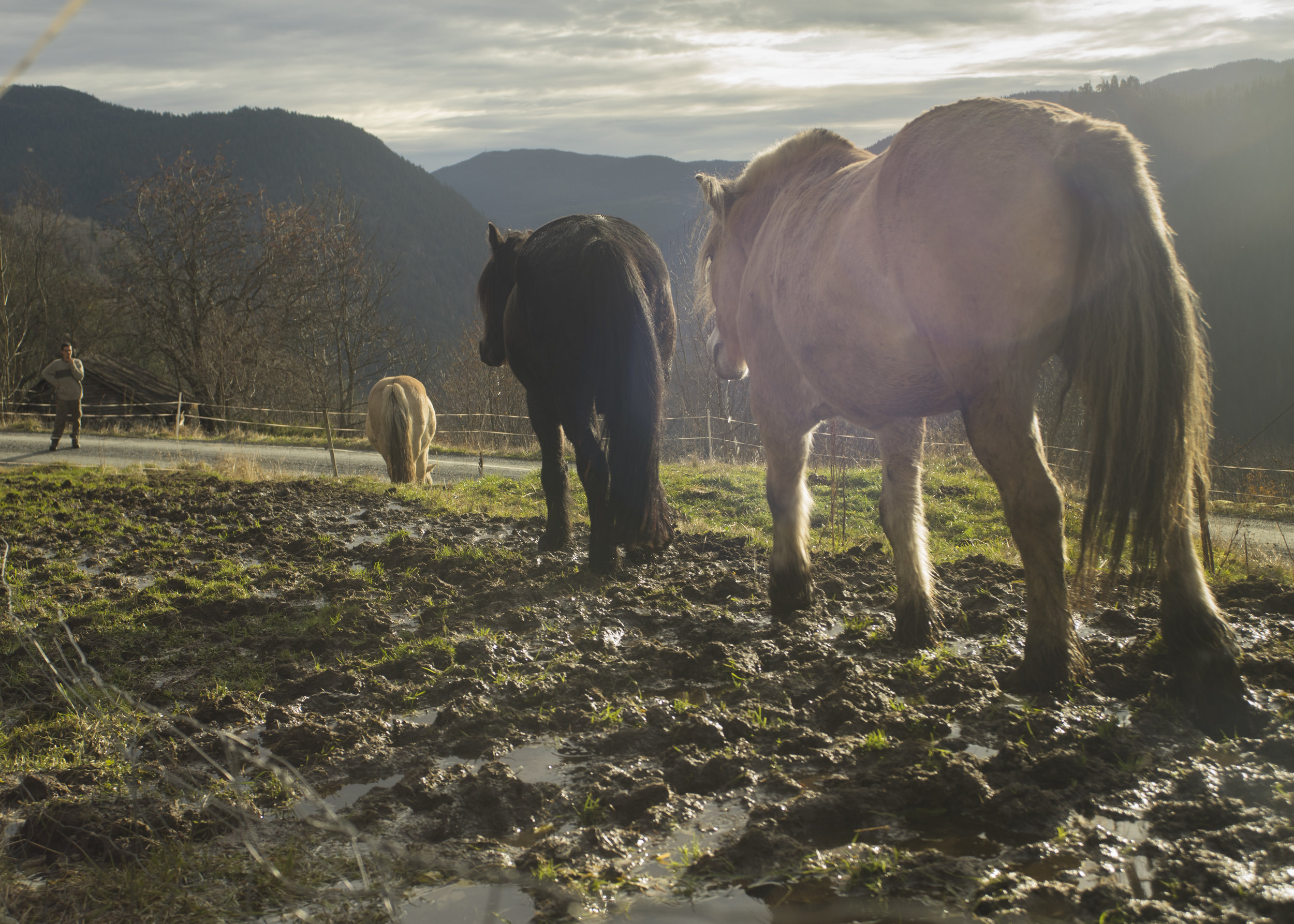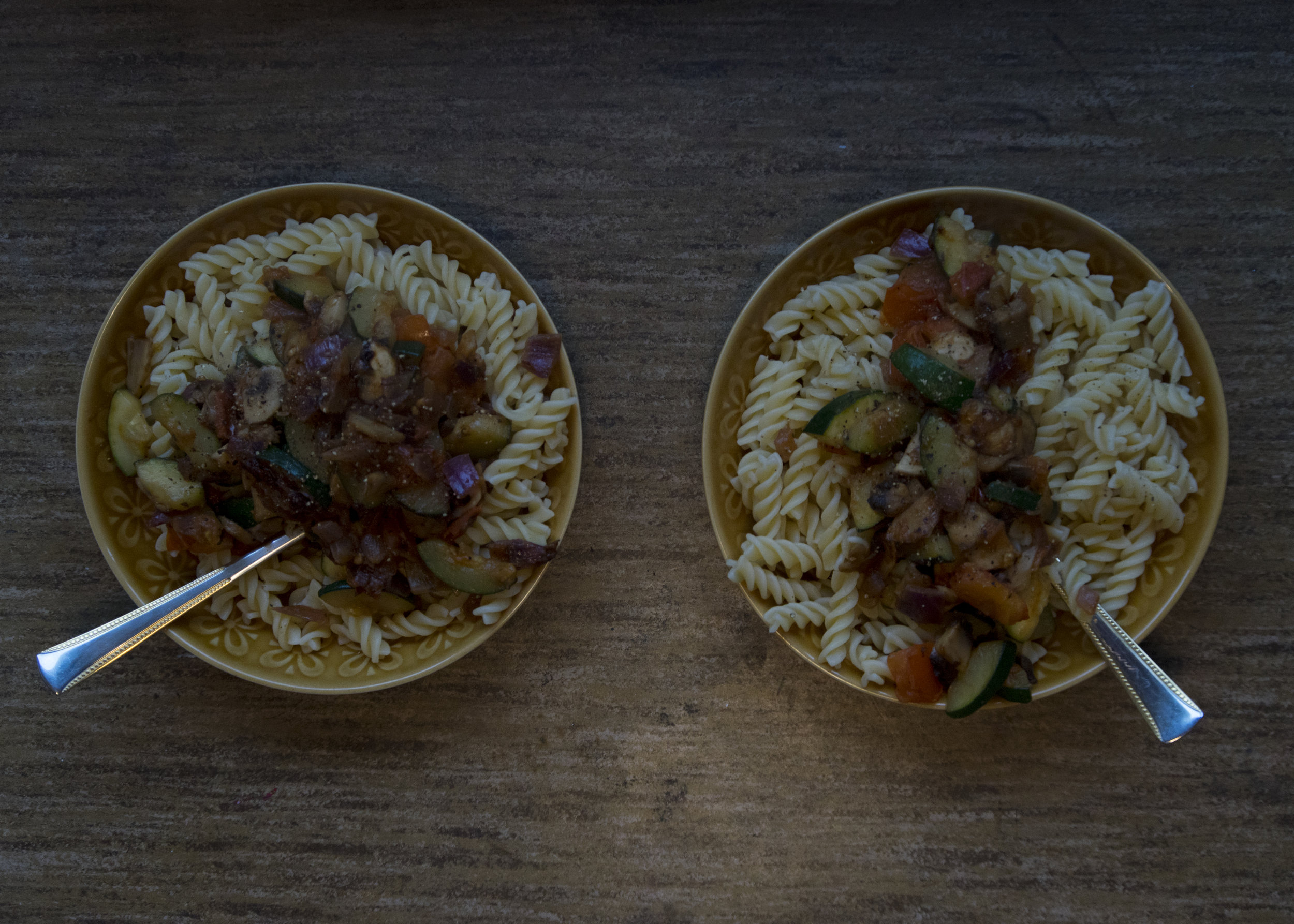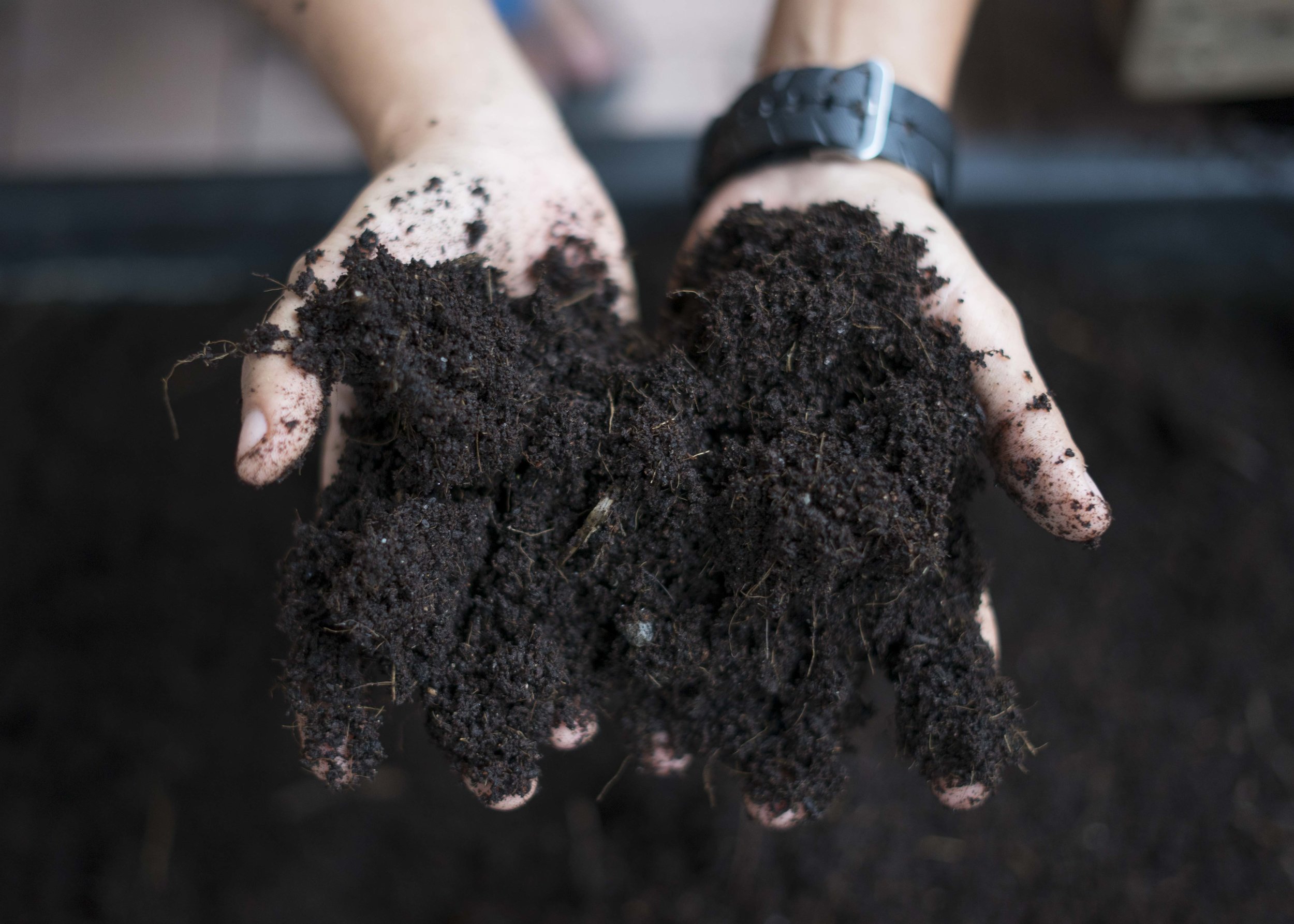What's On Your Plate: Norway

This post will share stories of our wonderful times traveling around Norway! In Stavanger, Norway we got welcomed by our friend Kåre. He drove us to his home in Finnøy where he was kindly letting us stay. Finnøy is a tiny gorgeous island on the west coast of Norway, full of small agricultural farms and surrounded by many fish farms. Even during the night drive to Kåre’s house through the blur of my tired eyes from the long trip, I could tell we were driving through farmland. In the next few days we ate new foods, went lobster fishing for the first time in our lives, and made friends with lots of sheep and cows!
FINNØY
Before arriving at Kåre's home, we stopped at KIWI, an affordable Norwegian grocery store that we ended up visiting many times during our stay. The next few days here, we cooked a lot of veggies, beans, and grains. We also got to try a good variety of Norwegian beer! Peder utilised the souvenir he got from the famous Icelandic Phallological Museum.
One of our most special experiences in Finnøy was the opportunity to go lobster fishing with Kåre. We were out for the last catch of the season to pull up the cages for good because the government only allows people to fish for lobster in October and November. We drove out to find the cages and see the beauty of the ocean and lush green countryside, often speckled with sheep and cows. I took over driving the boat, Kåre used a long pole to pull the cages out of the water. The cages were marked with buoys a bit smaller than a basketball that have the owners name written on them. There were nine cages to pull up which quickly filled up the boat. Peder would help Kåre get the crabs from the cage to a plastic pale and then put the cage on the front of the boat. Wait, aren't we lobster fishing, not crab fishing? The cages we were pulling up catch both crabs and lobster. Lobster are much more rare to find in these waters, so unfortunately the catch was mostly crab.
About halfway through pulling up the cages, Kåre told me to be sure to have the GoPro running, and he pulled up a lobster! It was amazing to see such a beautiful creature. This one was carrying eggs, so we had to throw it back. Lobsters have to be a certain size and not have eggs to be legally caught, or else one can receieve a large fine and have their license taken away! Although I did not eat any crab from the ocean, as I am vegetarian, the experience taught me a lot about fishing and got me thinking about fishing and farming regulations in Norway.
Another very special day in Finnøy was when we got the opportunity to visit Lauvsnes Gartneri tomato farm. This farm has 30 hectares of tomatoes growing in greenhouses which produce up to 1,000 tons of tomatoes each year! That's about half the tomatoes Norway eats each year! Most of the tomatoes they grow are baby Juanita tomatoes. We got the opportunity to speak with Juan Terje Vignes, owner of this farm since 2000 as well as Leif Arild, who works at the farm. Their greenhouse grows tomatoes using very little soil and pumps CO2 near their roots to help them grow faster. When they discovered this technique, their plants produced 15% more tomatoes. They also use a small green fly to eat the bugs that attack their plants. Another thing we discussed was Norwegian governmental regulations on farming. They put a quota on how many cows farmers can have, and encourage farmers to grow everywhere in Norway, not just the places that have the best land for growing food. Only 2% of the area in Norway is actually growing food. Lauvnes Gartneri tomato farm is not organic, and we asked Juan why. he explained that the customers are very discouraged by the increase in price of organic products, and although he wants to go organic, it is not feasible for the business at this time. We sat down to try the tomatoes and as soon as he popped one into his mouth, Peder said, "These taste like candy." Leif laughed, pointed at a sign and said, "mesté så snob". Better than candy. That's they're slogan! At Lauvnes Gartneri they are constantly trying new things and working to mitigate their negative impacts on the environment from looking into putting up solar panels to going organic. I believe this lesson of constantly looking for ways to mitigate negative impact on the environment is something I try to do in my everyday life, especially with the food I choose to eat.
STAVANGER
We drove over to Stavanger for a day to explore the city and ended up spending the entire day in the Oil Museum! I had heard about the vast amount of oil that is around the coast of Norway, but I had no idea that it was Norway's #1 source of income! The Norwegian government gets 90% of all kroner (money) earned from the petroleum sector, providing roughly 30% of their revenue. They put a lot of the money from taxes into the Government Pension Fund Global. The Petrol industry also employees a large amount of their citizens, approximately 240,000 - 330,000 depending on definition of petroleum activities and annual variations. That's roughly 9-13% of the Norwegian workforce. I read in one part of the museum that the petroleum industry is why Norwegians are better paid than people in most other countries. As I was walking through the museum, spinning plastic tubes of oil in interactive exhibits and seeing small models of oil rigs, I kept wondering when they would talk about the environment. I learned that Norway has the 18th largest amount of oil in the world and the 12th largest amount of gas. Less than half of these two resources has been extracted. We all know the world population is growing, but does that mean we need more oil and gas? The museum certainly made that seem like the case, but I know wind energy, solar power, geothermal energy, and water power are all fully capable of powering our world. After quite a few hours learning, reading, and looking at miniature models of oil rigs, I heard a loud beeping noise and turned the corner to see a giant bomb! It was a very dramatic way to introduce climate change in the museum. Next to the bomb was a book showing the definition of a Dilemma: "A difficult choice between two or more alternatives, especially equally undesirable ones."
There were three rooms to go into to learn about three dilemmas. The signs outside them read, Dilemma: Climate or Oil?, Dilemma: Climate or Environmental Protection, and Dilemma: Climate or Prosperity? I was confused, and beginning to get a bit annoyed by the constant beeping of the bomb. I would love to write more about what I learned in each of these rooms, but I think that will have to be another blog post, as I need to get back to telling you stories about the food we ate in Norway! As I left the small portion of the climate change exhibit, they had me vote on if I was hopeful or not about climate change. The results from everyone voting, was that the majority of people who visited the museum seemed hopeful. Please leave a comment if you're interested in hearing more about the oil museum.
ølen
Between Finnøy and Stord we spent two fun nights in Ølen, to visit the school Kåre works at. On a ferry getting there we snacked on Svele, which is kind of like a pancake, and a sandwich with egg, cheese, and veggies. Ølen is a place where a lot of maintenance work for Oil rigs is done. There were four huge rigs right off the shore! Kåre was especially upset there was one right in front of his house. My highlight of this visit was going on a hike up in the mountains. One of Kåre's previous students, Kristoffer took us on gorgeous day hike up in the mountains. On our way down, we saw the oil rigs around Ølen transform from miniatures like in the museum to structures towering above us.
STORD
After visiting Ølen for a few days, we traveled on to the island of Stord. We stayed there for a few day with Magne and Torill, friends of Peders parents. Our breakfast there consisted of bread, a special Norwegian brown cheese, vegetables, and coffee. There were also other types of cheese on the beautiful abundant breakfast table. A few mornings we had scrambled eggs with vegetables too. The Norwegian brown cheese is called Brunost. It is made from whey, milk and/or cream. In Stord we got some much needed rest, spent time getting to know Magne and Torrill, and went on another beautiful hike. We also got the amazing opportunity to visit their cabin in Goddo, a very special place. Thank you Magne and Torill for showing us around Stord!
TELEMARK
Our time in Telemark at the Ringeståga farm was full of learning! We had a unique diet there that included a lot of bread! Daniel got old bread from a bakery that weren't legally allowed to sell the bread. This bread was stored in giant garbage bags outside. The nicer bread was saved for human consumption and the bread in not so great shape was fed to the pigs and rabbits. We often had bread with their homemade butter or homemade honey. The cellar in Daniel and Lisa's house was full of potatoes, carrots, turnips, cheese, and cider. In another room of their house they stored huge bags of onions. Most cooked meals consisted of vegetable soup or roasted veggies. The first day I prepared food for the 7 of us on the farm, I was astounded at how long it took for me to wash, peel, chop, and cook enough veggies for everyone.
We learned the process of turning apples and pears into cider with hand-powered tool during our stay. ! First, we put the apples into hand grinder of, to break the apples into chunks that were roughly the size of an inch or smaller. This took lots of repetitive turns of a handle to hand power the machine. There was a bucket beneath the machine to catch the apple chunks. Next we took the bucket of apple chunks and poured the contents into another hand-powered tool. It was essentially a wooden container lined in a netting material that the apples were poured into. A wooden top covered it and then was screwed down to squeeze the apple juice out. We put a large metal container below to catch the fresh juice. The remains of the apple were fed to the pigs. The first day we made juice, it took us nearly the whole day to make a full bucket of juice! It made me appreciate drinking the juice much more, knowing all the work put into making it. This juice, often mostly apple and a bit of pear to sweeten it up is then boiled to clean it, spiced up, and then bottled. For more about our time at this farm, check out the blog post where I talked about our week at this farm.
We had the opportunity to go to the Dalen market with Lisa and Daniel one weekend. They sold this handmade juice at the market as well as some jam and some Christmas juice. We helped glue on the labels to the bottles the night before. The beautiful design was hand drawn by Daniel. At the market, we had the opportunity to explore other booths, as it was difficult selling a product without speaking Norwegian. We tried another pancake-like dish as well as got to sample some goat cheese! We spoke with the goat farmer and almost were able to arrange a visit to her farm, but unfortunately the timing did not quite work out.
OSLO
Our last stop in Norway was to the capitol, Oslo! Walker and Lucy, wonderful friends of Peder hosted us here. On the bus to Oslo I was grateful for the free coffee. However, the cups were so tiny! One thing I was getting used to being told was, "Everything is bigger in America." Compared to Norway, it definitely seems to be true! In Oslo we had a wonderful time relaxing, trying some more Norwegian beer, exploring, as well as planning the Thailand, New Zealand, and Hawaii portions of our trip. Walker cooked many delicious meals for us, that we could never seem to remember to photograph! He made homemade pasta one night, and many other delicious dishes! We shopped for food at the matalen market as well as KIWI. In the market we saw this awesome food wheel showing what vegetables were in season! It reminded me of the importance of being knowledgeable about what is in season wherever I am so I can get the freshest food!
In Oslo I also visited the Astrup Fearnely Art Museum, Vigelandsparken, Akershus Fortress, the Botanic Gardens (very snowy!), the Opera House, the Contemporary Art Museum and the Noble Peace Center. The Contemporary Art Museum had a fascinating exhibit called Norsk Nature that encouraged viewers to think about nature in different ways. We also got to see a live show from a local band, Amber Clouds. They played at an awesome venue called Parkteatret. At the Astrup Fearnley Museum, there was an exhibit of artists from LA. Some of the pieces were clearly about the struggles of drought in southwest US. At the Noble Peace Center, one quote I saw still lingers with me,
"Education is the most powerful weapon which you can use to change the world." -Nelson Mandella
WHAT'S ON YOUR PLATE?
Don't know where your food is coming from? Have you put in some solid effort to find out? Although I know it is often difficult to learn where your food is coming from, sometimes it is not! Simply by making an effort to research where a few ingredients are coming from can teach you a lot. Try choosing just one item on your plate, such as a piece of toast. If the piece of food you picked has a label, that is a great place to start. See what you can find on the packaging, and then perhaps go online to research the company more. Remember to use more sources than just the company's website! Perhaps next time you go to buy food, you could ask a store clerk or manager to help you learn about where and food your food is coming from. The more they see interest from customers, the more likely they are to start labelling where food comes from! In Norway labelling food items with the farm they come from is getting more and more popular. I hope this happens soon in the US too!


























































































